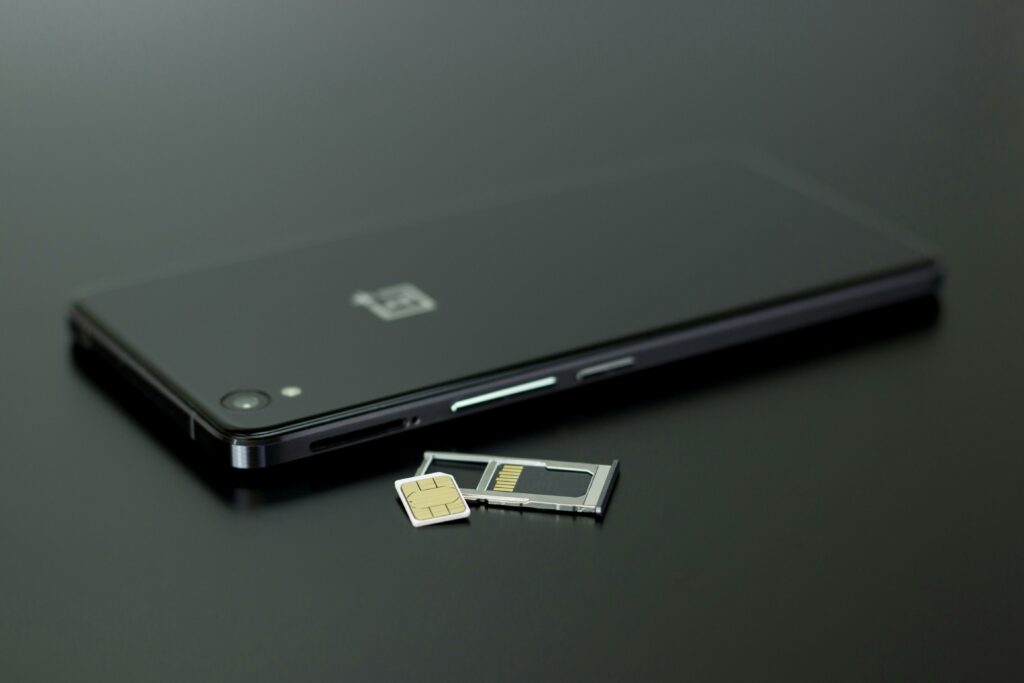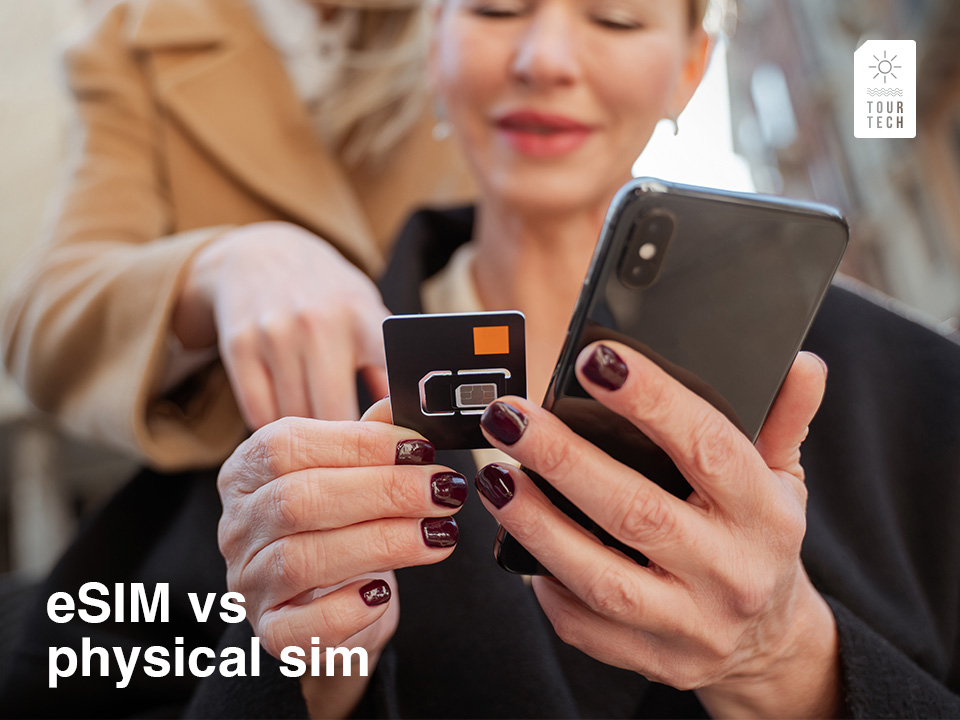In the age of constant connectivity, the choice between eSIM and physical SIM technology is becoming increasingly important. Understanding the nuances of these two options is essential for navigating the path to seamless connectivity. While physical SIM cards have been the norm, eSIM technology offers a new standard in mobile connectivity.
In today’s world, where uninterrupted access to communication and data is paramount, the importance of seamless connectivity cannot be overstated.
Both physical SIMs and eSIMs have their own set of advantages and limitations. Understanding the differences and benefits of each option can help you make an informed decision.
This blog post will provide an overview of the key differences between eSIM and physical SIM technology and explore their respective implications for achieving uninterrupted connectivity in today’s dynamic digital landscape.
Contents / Contenidos
Pros and Cons of Physical SIM Cards
There are some evident advantages of using physical SIM cards instead of eSIMs, i.e. familiarity, user friendliness, compatibility, and cyber-security.
Plastic SIM cards provide a reliable and widely supported method for connecting to cellular networks, ensuring broad compatibility and consistent service in all devices. They offer a tangible, familiar means of activating and managing a mobile subscription.
A significant advantage of SIM cards vs. eSIMs is that you can easily swap the card on your mobile phone while an eSIM needs to be deactivated by the carrier. You’ll need to contact customer support to make any changes regarding the device on which you’ve installed the eSIM.
Plastic SIMs are less susceptible to cyber-attacks, since you need to have physical access to the plastic card to hack it.
However, physical SIM cards can get lost or damaged, resulting in temporary loss of connectivity, and restrict device design by requiring a card slot, making mobile phones heavier and bulkier compared to devices with an eSIM.
Advantages of eSIM Technology
ESIM technology offers significant advantages, including flexibility and convenience. You can easily switch between mobile carriers with no need for a physical SIM card. This flexibility allows you to take advantage of competitive pricing and data plans. The possibility of using both a SIM card and an eSIM at the same time allows you to choose the plan and carrier that best suits your needs at any given moment. This helps you reduce mobile costs.
In addition, eSIMs can be activated instantly. Just by downloading the eSIM plan that piques your interest, you’ll receive a QR code to scan and install an eSIM profile in a matter of minutes. No need to wait for a plastic SIM card or to make long queues at a mobile store.
ESIMs also offer an environmental advantage. This technology reduces the need for plastic SIM cards and the associated manufacturing and shipping processes, contributing to a more sustainable approach to mobile connectivity.

Travel eSIM: A perfect solution
A travel eSIM is the perfect example of the advantages of eSIMs vs. SIM cards. With a travel eSIM, you can enjoy the benefits of a card catered for your travel needs, while you keep your physical SIM card enabled for calls and SMS. A travel eSIM can be downloaded from anywhere in the world, allowing you to enjoy local rates and to use another country’s carrier network without having to substitute your home carrier’s plastic SIM card.
With a travel eSIM like Orange eSIM Holidays, you can enjoy 30GB of data in any (and all) the countries of the European Union, Norway and Liechtenstein, for just €25. It also provides you with a Spanish phone number and 100 minutes of voice calls.
Travel eSIMs embody all the advantages of eSIMs, and provide a necessary service where physical SIM cards fall short. You don’t have to speak to a local, you don’t have to visit a store, and you don’t have to wait for the SIM card to arrive in your mail. You can simply click on “Buy eSIM” and after a couple of minutes you’ll have your eSIM installed on your phone. Convenient and useful.
Challenges and Limitations of eSIMs
ESIMs face several challenges. The major one is related to the compatibility of the mobile phones, as many devices and carriers have yet to fully embrace the technology.
Transferring an eSIM profile is also quite cumbersome. Since you can’t physically extract an eSIM from your device, you need to rely on the eSIM carrier’s customer support to deactivate the eSIM on your former mobile phone if you want to use it on a new one.
There are also security concerns regarding eSIMs, as they may be susceptible to hacking and unauthorized access.
Lastly, the availability of network support for eSIMs varies across different regions, which can limit the usability of the technology for global travelers and users in remote areas.
When deciding between eSIM and physical SIM, there are a few factors to consider: device compatibility, network coverage, and travel habits. ESIMs allow you to easily switch carriers with no need to physically change SIM cards, making them great for frequent travelers.
However, physical SIM cards have broader device and region support. So, think about your specific needs and check if your desired carriers offer eSIM plans. Also, consider how easy the setup process is and any potential network limitations before making your decision.
Switching from a physical SIM to an eSIM is a straightforward process with the right guidance. First, confirm if your device is eSIM compatible. Then, contact your mobile carrier to activate the eSIM and follow their instructions to complete the setup. Once the eSIM is activated, you can start enjoying its benefits right away. Just remember to back up your data to ensure a smooth transition.
ESIM technology is expected to grow and become more widespread in the coming years. It will probably be integrated into a wider range of devices, including smartphones, wearables, and IoT applications. As eSIM technology advances, mobile operators and device manufacturers will increasingly support eSIMs, making them easier and more convenient for consumers. The development of global standards and regulations will also be important in shaping the future of eSIM technology. Overall, eSIMs are growing and will have an enormous influence on how we connect and communicate in the future.
Recap
In conclusion, both eSIM and physical SIM cards offer distinct benefits and challenges in terms of connectivity. eSIM provides the convenience of remote activation and multiple carrier support, while physical SIM cards offer widespread compatibility and easy transfer between devices. The future of connectivity is likely to involve a coexistence of both technologies, catering to both different user preferences and evolving connectivity needs.
With the growing global support for eSIM and the potential for cost savings, travelers can benefit from the flexibility and ease of use that eSIM technology provides. Embracing eSIMs for travel presents an opportunity to streamline connectivity needs and enhance the overall travel experience.
The existence of travel eSIMs like Orange eSIM holidays provides the perfect example of both technologies working together to provide a perfect consumer experience. With this travel eSIM, you can visit any country in the European Union allowing you to have a discounted and prepaid rate for your data needs on an eSIM while keeping your home carrier’s physical SIM for your calls and SMS, both of them active at the same time.
Whether it’s for travel or everyday use, understanding the evolving landscape of eSIM technology will empower you to make informed decisions and leverage the advantages of modern connectivity solutions regarding mobile phones.
Buy Orange eSIM Holidays
FAQs
Are eSIMs slower than physical SIM cards?
No. The type of SIM card – whether eSIM or physical SIM – does not affect your mobile network speed. Your connection speed depends on other factors, like coverage quality, service plan, and network congestion. The SIM card format itself does not have an impact on your connection speed.
Can you use an eSIM and a SIM card at the same time?
With dual SIM technology, you can use an eSIM and a regular SIM card simultaneously. By downloading an eSIM plan, you can instantly connect to a local network when traveling, all without having to remove your physical SIM card. You can use the eSIM for data and the SIM card for calls and SMS, still keeping your phone number active.
What happens to my eSIM if my phone breaks?
If you need to switch the device on which you were using an eSIM, you’ll need to contact the carrier so they can deactivate the eSIM on your old device and activate it on your new mobile phone. In case you’ve lost or broken your old phone, you can contact customer support and ask for the eSIM to be transferred to your new device. Have your new phone’s IMEI at hand in case they ask for it.
Do eSIMs have phone numbers?
Yes, an eSIM can have a phone number associated with it. When you buy a SIM card or an eSIM, the card identification number gets associated with a contract on the carrier’s database. It doesn’t matter if you’re using an eSIM or a SIM card, you can link your phone number to your eSIM.
How to know if my device is eSIM compatible?
The best way to know if your mobile phone is eSIM compatible is to ask the carrier. Many eSIM carriers offer a list of compatible devices on their websites. In general terms, iPhones since the iPhone 11, Samsung Galaxy mobile phones since the Galaxy S20, and Google Pixel phones since the Google Pixel 3 as well as certain high-end phones from other manufacturers, are eSIM compatible.


